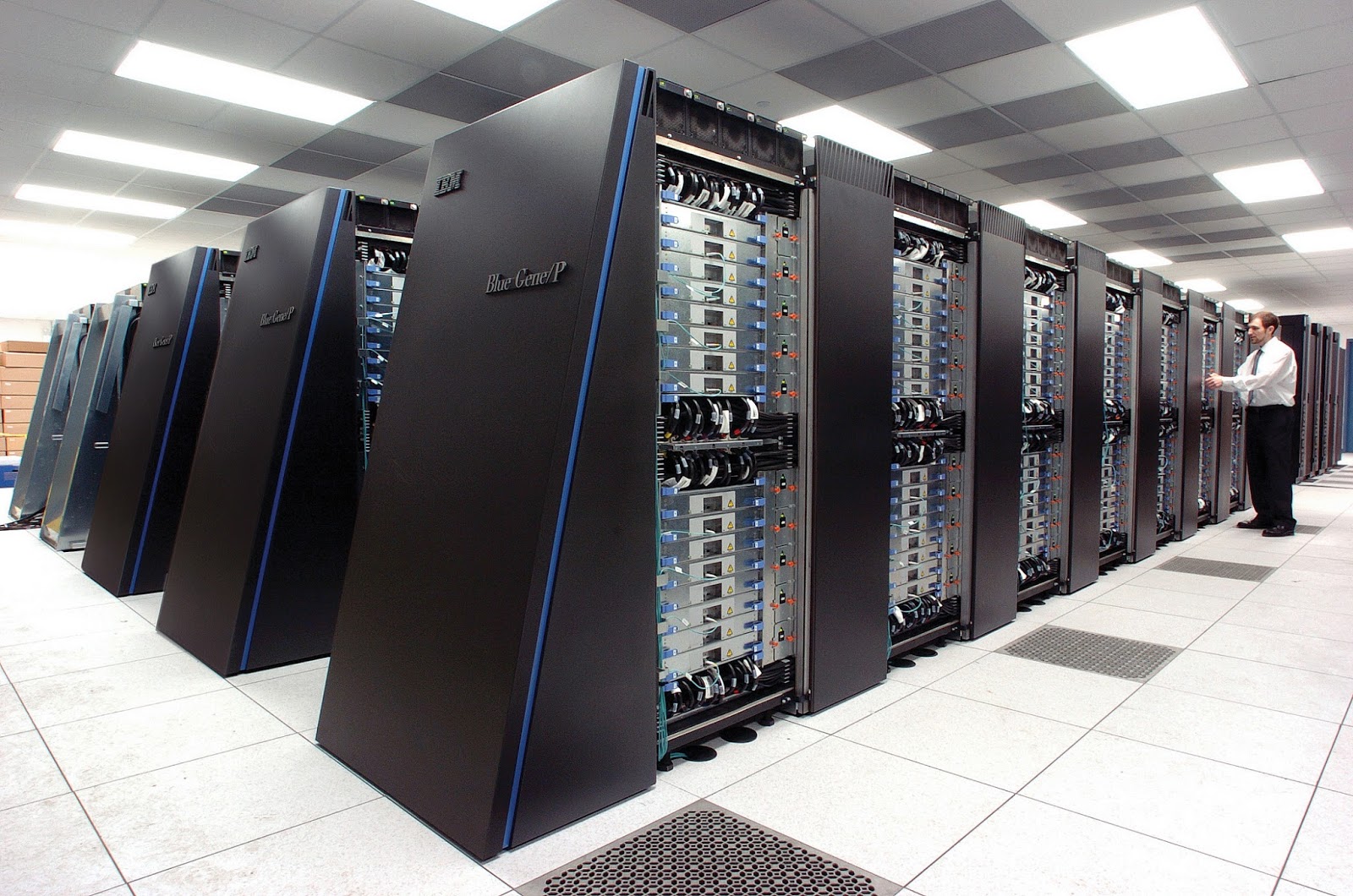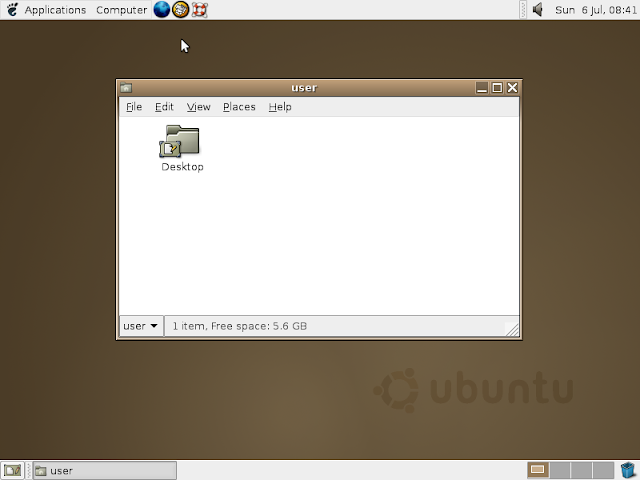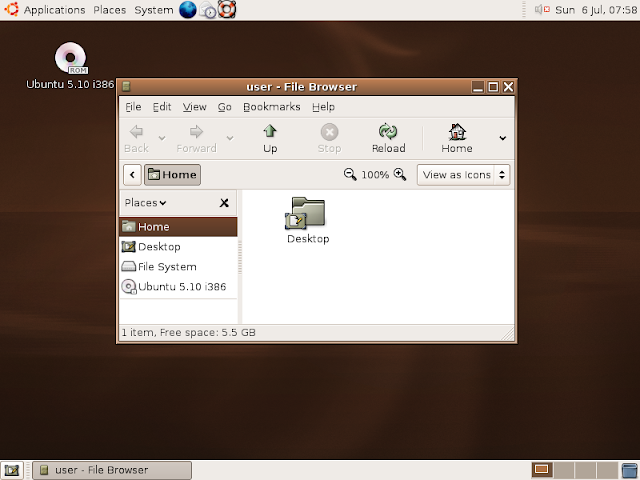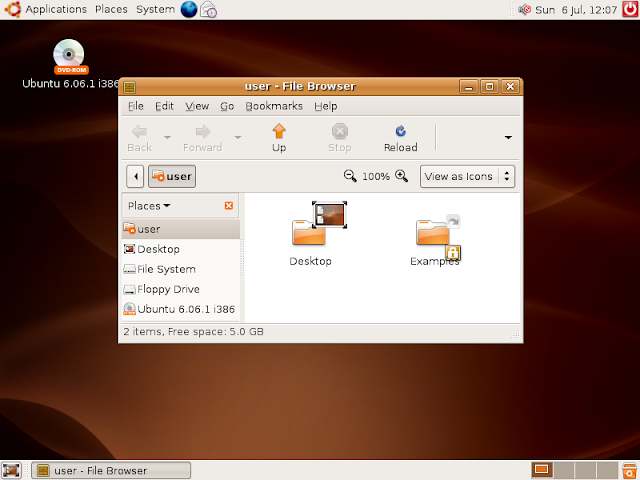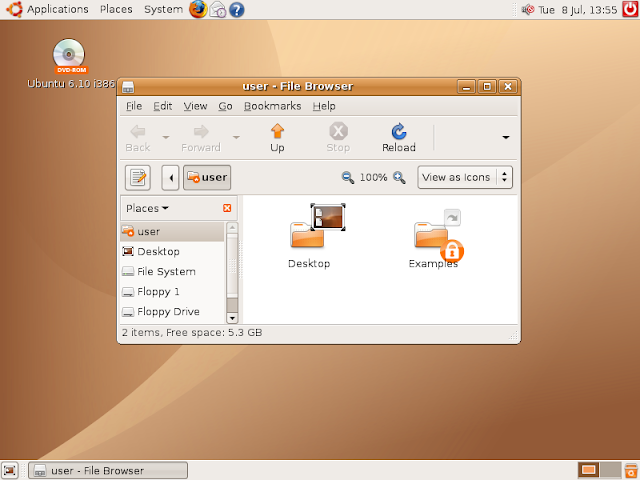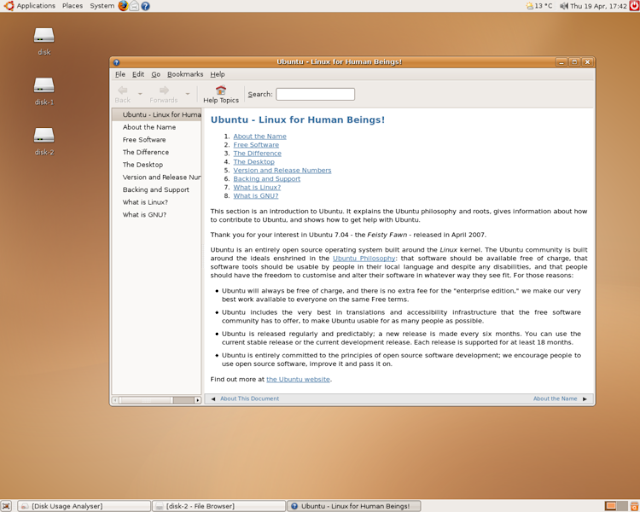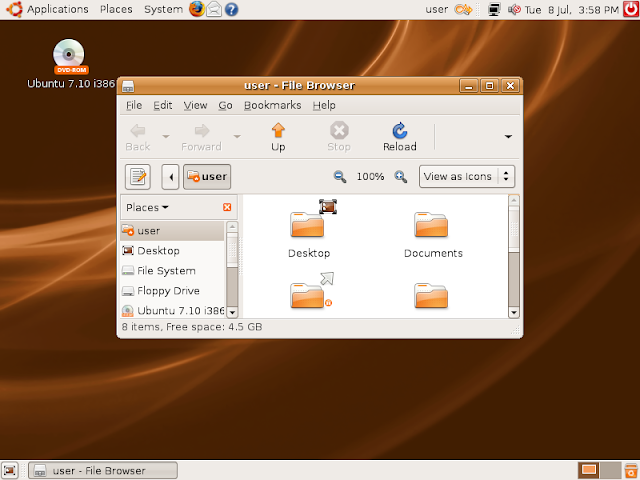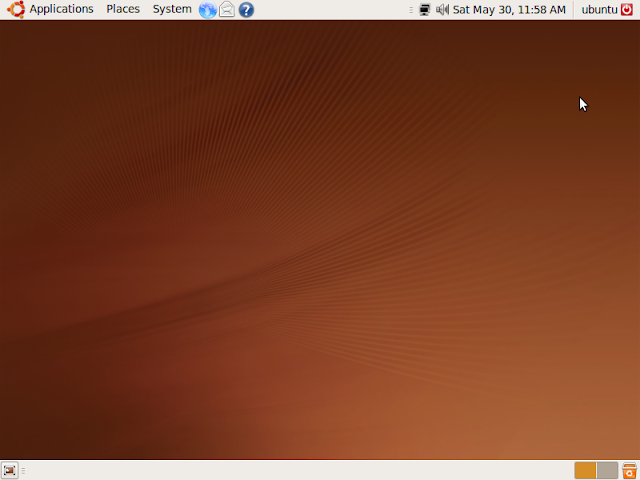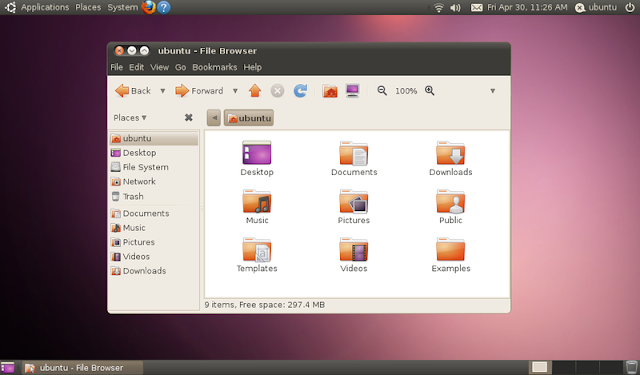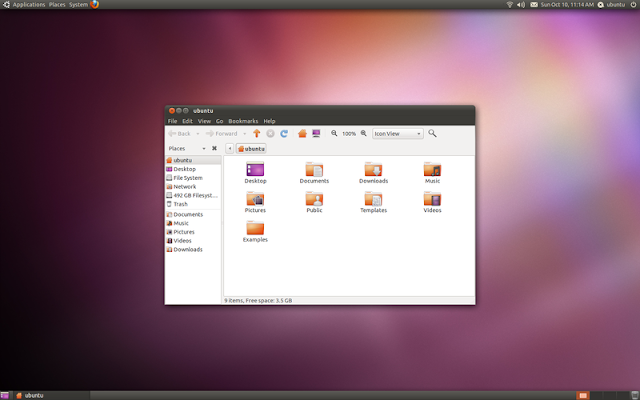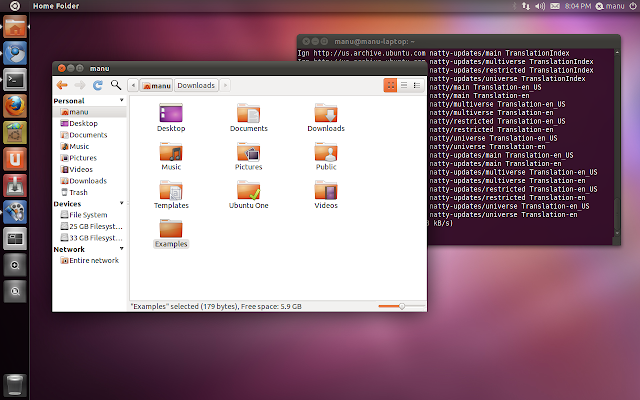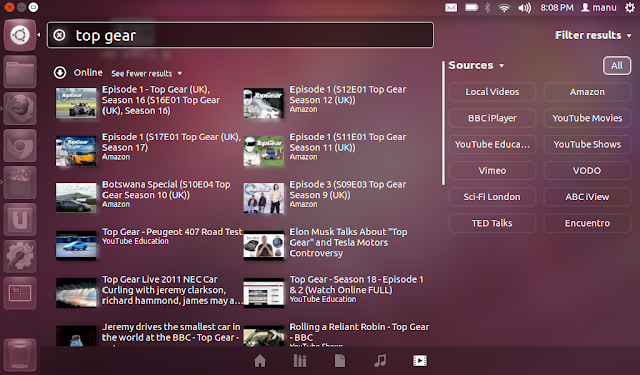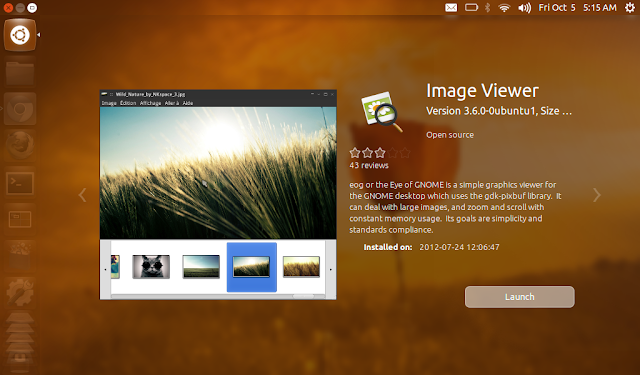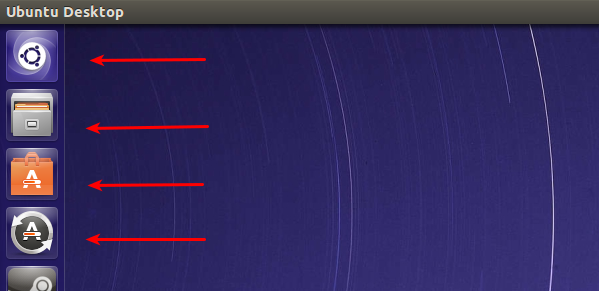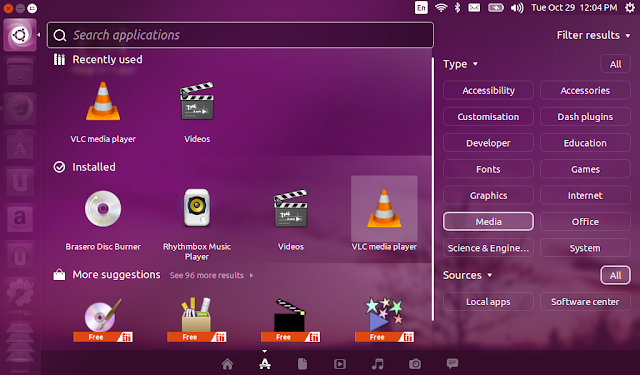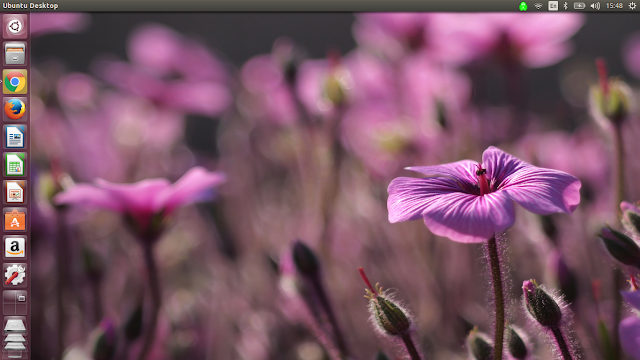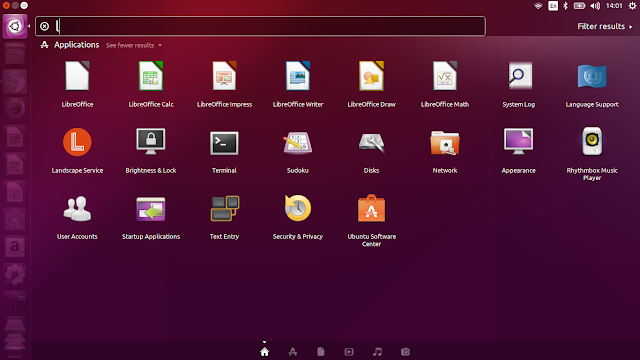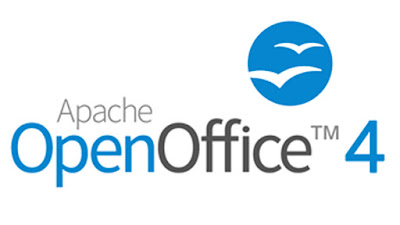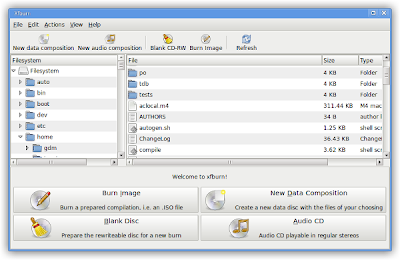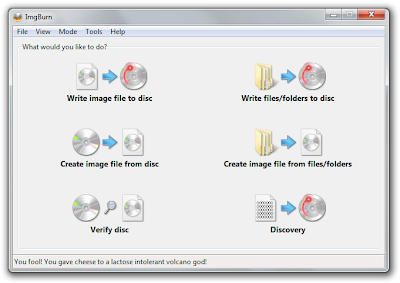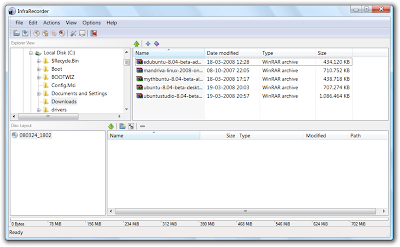No surprises there. Why would any supercomputer vendor ever use anything other than an open code is beyond me. The latest Top500 list of Supercomputers is out and Linux absolutely dominates the scene while Ubuntu is the flavour that powers the world's fastest Supercomputer.
Linux Powers World's Fastest Supercomputers
Linux's absolute domination of the world's most sophisticated supercomputers doesn't come as a surprise. In fact, the enterprise sector had long embraced the Linux eco-system with open arms. So much so that, the world's fastest Supercomputer runs a Chinese derivative of Ubuntu called Ubuntu Kylin, as revealed by Mark Shuttleworth himself during his keynote speech at OpenStack Summit. Ubuntu Kylin is now an official Ubuntu flavour.
Top500 Supercomputers list reveals quite a number of interesting statistics. Out of 500 top Supercomputers, 486 of them runs on Linux, 12 on Unix, 1 mixed and 1 of them on Windows. Among the hardware vendors, HP tops the list with 35.6% market-share while IBM and Cray Inc. takes 2nd and 3rd spot with 18.2% and 14.2% market-share respectively. Curious to know who runs that lone Windows based Supercomputer? The lone remaining Windows machine is Shanghai Supercomputer Center's Magic Box built by Dawning in 2008. It's #436 on the list.
Tianhe-2 (MilkyWay-2) remains the world's fastest supercomputer as before (in 2013, 2014 and 2015). Situated in National Super Computer Center in Guangzhou, China, Tianhe-2 is a 33.86-petaflops supercomputer built at an estimated cost of US$390 million. Second in the list is Oak Ridge National Laboratory's Titan supercomputer situated in United States. See the full list by Top500.
Source : http://www.techdrivein.com/2015/07/out-of-top500-supercomputers-486-runs-linux.html
Arts and Entertainment, Automotive, Book Reviews, Business, Cancer, Communications, Computers and Technology, Finance, Food and Drink, Gaming, Health and Fitness, Home and Family, Home Based Business, Home Improvement, Insurance, Internet and Businesses Online, Investing, Kids and Teens, Legal, News and Society, Pets, Real Estate, Recreation and Sports, Reference and Education, Relationships, Self Improvement, Shopping and Product Reviews, Travel and Leisure, Women's Interests, Writing and Speak
Dec 10, 2016
11 Years Of Ubuntu: History Revisited (2015)
Ubuntu has touched the lives of many among us in different ways. I can't speak for everyone here and hence I will share a few of my experiences with Ubuntu. For me, Ubuntu was the gateway to Linux and to the whole open source way of thinking. Ubuntu taught me that computers are not all about Windows OS and that there are far better alternatives than the "default" Windows desktop which you have been made to see and learn from a younger age. Lets go back in time and see how Ubuntu evolved over the years to become what it is now - a totally awesome, user-friendly and fast changing Linux based distro for 'human beings'.
A Brief History of Ubuntu
A new version of Ubuntu is released every 6 months like clockwork, and as of Oct 2015, a grand total of 23 stable releases has been delivered. Each release also has a specific code name which are made using an adjective and an animal with the same first letter (e.g. Hardy Heron, Wily Werewolf). We will do a brief overview of each one of them below. A walk back through the history of Ubuntu. Read on.
Ubuntu 4.10 (Warty Warthog)
Ubuntu 4.10 codenamed "Warty Warthog" marked the beginning of a new kid in the block, the first and foremost release of Ubuntu by Canonical foundation. This new Linux distro was based on Debian and aimed at giving new users a trouble free experience of Linux. This release also crucially brought the Ubuntu shipit feature where by users could get Ubuntu installation CD's mailed to their homes for free through a simple signup. Shipit was one of those key USPs that made Ubuntu a very popular choice among youngsters in those early days. I think I still have several lying around near my old PC. And who can forget those Ubuntu branded stickers!
Ubuntu 5.04 (Hoary Hedgehog)
Ubuntu 5.04 codenamed "Hoary Hedgehog" was released on 8 April 2005. From this second release onwards, massive changes started to trickle in. Ubuntu 5.04 added many new features including an update manager, upgrade notifier, readahead and grepmap, suspend, hibernate and standby support, dynamic frequency scaling for processors among many other major improvements. Ubuntu 5.04 was so ahead of its time that it even introduced support for installation from USB devices.
Ubuntu 5.10 (Breezy Badger)
Ubuntu 5.10 codenamed "Breezy Badger" was released on 12 October 2005, the third stable release of Ubuntu by Canonical. Ubuntu 5.10 added several new features including a graphical bootloader (Usplash), an Add/Remove Applications tool, a menu editor, an easy language selector, crucial logical volume management support, full Hewlett-Packard printer support, OEM installer support among others. More importantly, this release also brought in Launchpad integration for bug reporting and software development.
Ubuntu 6.06 LTS (Dapper Drake)
Ubuntu 6.06 LTS codenamed "Dapper Drake" was released on 1 June 2006. It was also the first Long Term Support(LTS) release. This was also the only time when the Ubuntu release cycle was slightly pushed forward by 2 months owing to all sorts of delays. Many new features were introduced including having the Live CD and Install CD merged onto one disc, a graphical installer on Live CD, a network manager for easy switching of multiple wired and wireless connections, implementation of Humanlooks theme among other improvements.
Ubuntu 6.10 (Edgy Eft)
Ubuntu 6.10 codenamed "Edgy Eft" was released on 26 October 2006, Canonical's fifth Ubuntu release. Tomboy, F-Spot became new defaults. Human theme also went through heavy modifications.
Ubuntu 7.04 (Feisty Fawn)
Ubuntu 7.04 codenamed "Feisty Fawn" was released on 19 April 2007. This release had a very special significance for me. Feisty was my first real Linux experience. I was a complete noob to the whole Linux way of life then and barely installed Ubuntu in my laptop with the help of friends and Ubuntu Forums. And to be frank, the primary reason for me trying out Ubuntu was Compiz and all the bling that came with it. In those clogged XP-Vista days, Compiz was (and it still is in many ways) a breath of fresh air.
Ubuntu 7.10 (Gutsy Gibbon)
Ubuntu 7.10 codenamed "Gutsy Gibbon" released on 18 October 2007. Ubuntu 7.10 introduced Compiz Fusion as a default feature. This seventh release of Ubuntu also marked the introduction of full NTFS support.
Ubuntu 8.04 LTS (Hardy Heron)
Ubuntu 8.04 codenamed "Hardy Heron" was released on 24 April 2008. This was the second LTS version of Ubuntu. In my opinion, this release had one of the best designed Ubuntu wallpaper as default. Brasero disc burner and transmission bit torrent client were introduced during this release. Controversial Pulse Audio became the new default system sound server. This release also introduced Wubi installer using which you can install Ubuntu inside Windows without repartitioning the disk.
Ubuntu 8.10 (Intrepid Ibex)
Ubuntu 8.10 codenamed Intrepid Ibex was released on 30 October 2008. It was the ninth Ubuntu release and it was also one of my favorite releases. This release introduced useful Ubuntu Live USB creator application. Guest session functionality was also introduced during Intrepid Ibex release.
Ubuntu 9.04 (Jaunty Jackalope)
Ubuntu 9.04 "Jaunty Jackalope" was released on 23 April 2009. This release marked the first time that all of Ubuntu's core development moved to the Bazaar distributed revision control system which is designed to make it easier for anyone to contribute to free and open source software projects. Faster boot time was another major achievement of this release.
Ubuntu 9.10 (Karmic Koala)
Ubuntu 9.10 codenamed "Karmic Koala" released on 29 October 2009. From this release onwards, Ubuntu slowly started to shift gears. A slew of changes started to flood Ubuntu. During Ubuntu Karmic's release cycle, Canonical introduced the One Hundred Paper Cuts project, focusing developers to fix minor usability issues. This was a major move and it helped bring a lot of polish for Ubuntu in the latter releases. This release also introduced Ubuntu Software Center.
Ubuntu 10.04 LTS (Lucid Lynx)
Ubuntu 10.04 codenamed "Lucid Lynx" was released on 29 April 2010. Ubuntu 10.04 "Lucid Lynx" is my favorite release to date and it brought about the biggest amount of changes ever. Ubuntu had a complete branding makeover during this release cycle. Even the brown theme was ditched for the first time for a more bright and pleasant looking "Light" inspired theme. Changes Ubuntu 10.04 Lucid Lynx went through.
Ubuntu 10.10 (Maverick Meerkat)
Ubuntu 10.10 codenamed "Maverick Meerkat" was released on 10 October 2010 (10.10.10) at around 10:10 UTC. Close to the heels of Ubuntu Lucid release, Ubuntu Maverick was also packed with new features and improvements. Ubuntu Software Center became one of the applications that received maximum amount of attention. Canonical's attention to detail started showing up big time during Ubuntu 10.10 release cycle.
Ubuntu 11.04 (Natty Narwhal)
Ubuntu 11.04 "Natty Narwhal" was perhaps *the* most controversial Ubuntu release ever. Canonical introduced Unity shell with Ubuntu 11.04 which created quite a furore among its vast user base. Unity was Ubuntu's answer to GNOME 3.0's GNOME Shell desktop, though Ubuntu 11.04 was still based on previous GNOME 2.x.
Reactions from users was not really what Canonical would have hoped for. Unity was far less customisable when compared to earlier versions and that was simply unacceptable to many long-term Ubuntu users.
Ubuntu 11.10 (Oneiric Ocelot)
Ubuntu 11.10 codenamed "Oneiric Ocelot" was the first GNOME 3.0 based Ubuntu release. Oneiric did not brought in sweeping changes like its predecessor did. But it does brought in a lot of polish to the controversial Unity UI. LightDM replaced GDM as Ubuntu's new default login screen. Classic Gnome Desktop was completely ditched in favor of Unity 2D during this release cycle. A quick screenshot tour of Ubuntu 11.10 Oneiric Ocelot.
Ubuntu 12.04 LTS (Precise Pangolin)
Quicklists was introduced as a default feature for the very first time. Apart from the usual three Unity lenses (Applications, Files and Music), there is an additional Video lens too which lets you select and play videos from a variety of sources ranging from your local collection to YouTube Movies, BBC iPlayer and TED Talks to name a few. HUD became fully operational. Default launcher behavior is set to "always visible" instead of "dodge windows". Rhythmbox is back again replacing Banshee as the default music player. Changes in Ubuntu 12.04 LTS.
Ubuntu 12.10 (Quanty Quetzal)
Like most previous *.10 releases, Ubuntu 12.10 became the testing ground for a barrage of new features. We listed a grand total of 23 improvements/changes in Ubuntu 12.10, which is pretty staggering at any count. Improvements to LightDM based login screen, remote login facility, Unity Dash price ribbons, Local Apps filter, Launcher improvements, a new dedicated Ubuntu One Music app, and more privacy with the introduction of ON/OFF switch for online search results withing Unity Dash. Ubuntu 12.10 had its share of controversies also. For example, the introduction of Amazon shopping lens as default riled up many.
Ubuntu 13.04 (Raring Ringtail)
Though Unity was improved leaps and bounds by now, it lacked the polishness and finesse it deserved. With the help of recently joined designer known for his gorgeous works including Faenza theme, Ubuntu 13.04 look and feel got some much needed attention. The new shutdown menu and core app icons were a class apart. The new "spinning" Unity dash icon and Software Updater icon set benchmarks in branding. Also, Wubi installer was dropped during this release owing to compatibility issues with Windows 8. And more importantly, it was decided that non-LTS Ubuntu releases will see their support periods halved (9 months instead of 18) from Ubuntu 13.04 onwards. Go through the list of visual changes in Ubuntu 13.04.
Ubuntu 13.10 (Saucy Salamander)
With Unity maturing, updates became more minor in nature. There were talks about replacing Firefox with Chromium as default web browser for Ubuntu, but it never materialised. There were also talks about replacing aging X11 with XMir display server and then go on to completely replace X session by Ubuntu 14.04 LTS. But XMir still remains a work in progress.
Ubuntu 14.04 LTS (Trusty Tahr)
Unity 7 was really starting to feel more "middle-aged" with every passing release. More incremental updates than sweeping changes showed signs of maturity. But even then, the ability to turn off the global menu and the arrival of Local Integrated Menus were welcome additions. Click to Minimize became available through a CCSM update. X11 was retained and XMir adoption pushed even further. Ubuntu 14.04 LTS was a largely uneventful LTS release, which can be a good thing in my opinion. Everything just worked.
Ubuntu 14.10 (Utopic Unicorn)
Ubuntu 14.10 was supposed to be rock solid released release with incremental updates. And it was, for many. But for me, this one was a pretty eventful release. Weirdly, I faced a lot of teething issues with Ubuntu 14.10 so much that I had to replace Ubuntu with elementary OS as my daily work horse for the first time (not that I'm complaining). Netflix started working out of the box, which was a big positive. This was also the release cycle during which Canonical seriously devoted resources into its mobile platform and work on Unity 8 was acquiring some serious momentum. Here's our compilation of things to do after installing Ubuntu 14.10.
Ubuntu 15.04 (Vivid Vervet)
With the arrival of Ubuntu 15.04, things were back to normal for me. Ubuntu was working just as good as ever, thanks to "Vivid Vervet". This was also the release when Upstart was finally dropped in favour of systemd. There were also improvements to Intel Haswell and AMD Radeon graphics performance. Visual changes? Not so much. Oh and don't forget to read our top things to do after installing Ubuntu 15.04 compilation.
Ubuntu 15.10 (Wily Werewolf)
Ubuntu 15.10 was released just yesterday without much fanfare. With works on Unity 8 improving at a rapid pace, Canonical is finding less and less reasons to spend time on adding features and functionalities on Unity 7 based Ubuntu 15.10 "Wily Werewolf". Ubuntu Touch OS meant for mobile platforms got a lot of attention, yet again, which is now capable of receiving instant over the air updates. Mir display server was also supposed to be there as default, but its release has been pushed further. Visually, the biggest change is the removal of disappearing window edge scrollbars (something I really liked) in favour of the upstream GNOME scrollbars. Underneath, there are not much changes, except for the updated Kernel. Very stable and reliable OS though, have been using it since the arrival of first beta. Download here.
Next in Line: Ubuntu 16.04 LTS "Xenial Xerus"
This could turn out to be the most important Ubuntu release since the arrival of Unity, if not forever. To be released on 21 April 2016, Ubuntu 16.04 LTS is expected to include Unity 8 running natively on Mir. I can't wait!
Ubuntu 9.10 (Karmic Koala)
Ubuntu 9.10 codenamed "Karmic Koala" released on 29 October 2009. From this release onwards, Ubuntu slowly started to shift gears. A slew of changes started to flood Ubuntu. During Ubuntu Karmic's release cycle, Canonical introduced the One Hundred Paper Cuts project, focusing developers to fix minor usability issues. This was a major move and it helped bring a lot of polish for Ubuntu in the latter releases. This release also introduced Ubuntu Software Center.
Ubuntu 10.04 LTS (Lucid Lynx)
Ubuntu 10.04 codenamed "Lucid Lynx" was released on 29 April 2010. Ubuntu 10.04 "Lucid Lynx" is my favorite release to date and it brought about the biggest amount of changes ever. Ubuntu had a complete branding makeover during this release cycle. Even the brown theme was ditched for the first time for a more bright and pleasant looking "Light" inspired theme. Changes Ubuntu 10.04 Lucid Lynx went through.
Ubuntu 10.10 (Maverick Meerkat)
Ubuntu 10.10 codenamed "Maverick Meerkat" was released on 10 October 2010 (10.10.10) at around 10:10 UTC. Close to the heels of Ubuntu Lucid release, Ubuntu Maverick was also packed with new features and improvements. Ubuntu Software Center became one of the applications that received maximum amount of attention. Canonical's attention to detail started showing up big time during Ubuntu 10.10 release cycle.
Ubuntu 11.04 (Natty Narwhal)
Ubuntu 11.04 "Natty Narwhal" was perhaps *the* most controversial Ubuntu release ever. Canonical introduced Unity shell with Ubuntu 11.04 which created quite a furore among its vast user base. Unity was Ubuntu's answer to GNOME 3.0's GNOME Shell desktop, though Ubuntu 11.04 was still based on previous GNOME 2.x.
Reactions from users was not really what Canonical would have hoped for. Unity was far less customisable when compared to earlier versions and that was simply unacceptable to many long-term Ubuntu users.
Ubuntu 11.10 (Oneiric Ocelot)
Ubuntu 11.10 codenamed "Oneiric Ocelot" was the first GNOME 3.0 based Ubuntu release. Oneiric did not brought in sweeping changes like its predecessor did. But it does brought in a lot of polish to the controversial Unity UI. LightDM replaced GDM as Ubuntu's new default login screen. Classic Gnome Desktop was completely ditched in favor of Unity 2D during this release cycle. A quick screenshot tour of Ubuntu 11.10 Oneiric Ocelot.
Ubuntu 12.04 LTS (Precise Pangolin)
Quicklists was introduced as a default feature for the very first time. Apart from the usual three Unity lenses (Applications, Files and Music), there is an additional Video lens too which lets you select and play videos from a variety of sources ranging from your local collection to YouTube Movies, BBC iPlayer and TED Talks to name a few. HUD became fully operational. Default launcher behavior is set to "always visible" instead of "dodge windows". Rhythmbox is back again replacing Banshee as the default music player. Changes in Ubuntu 12.04 LTS.
Ubuntu 12.10 (Quanty Quetzal)
Like most previous *.10 releases, Ubuntu 12.10 became the testing ground for a barrage of new features. We listed a grand total of 23 improvements/changes in Ubuntu 12.10, which is pretty staggering at any count. Improvements to LightDM based login screen, remote login facility, Unity Dash price ribbons, Local Apps filter, Launcher improvements, a new dedicated Ubuntu One Music app, and more privacy with the introduction of ON/OFF switch for online search results withing Unity Dash. Ubuntu 12.10 had its share of controversies also. For example, the introduction of Amazon shopping lens as default riled up many.
Ubuntu 13.04 (Raring Ringtail)
Though Unity was improved leaps and bounds by now, it lacked the polishness and finesse it deserved. With the help of recently joined designer known for his gorgeous works including Faenza theme, Ubuntu 13.04 look and feel got some much needed attention. The new shutdown menu and core app icons were a class apart. The new "spinning" Unity dash icon and Software Updater icon set benchmarks in branding. Also, Wubi installer was dropped during this release owing to compatibility issues with Windows 8. And more importantly, it was decided that non-LTS Ubuntu releases will see their support periods halved (9 months instead of 18) from Ubuntu 13.04 onwards. Go through the list of visual changes in Ubuntu 13.04.
Ubuntu 13.10 (Saucy Salamander)
With Unity maturing, updates became more minor in nature. There were talks about replacing Firefox with Chromium as default web browser for Ubuntu, but it never materialised. There were also talks about replacing aging X11 with XMir display server and then go on to completely replace X session by Ubuntu 14.04 LTS. But XMir still remains a work in progress.
Ubuntu 14.04 LTS (Trusty Tahr)
Unity 7 was really starting to feel more "middle-aged" with every passing release. More incremental updates than sweeping changes showed signs of maturity. But even then, the ability to turn off the global menu and the arrival of Local Integrated Menus were welcome additions. Click to Minimize became available through a CCSM update. X11 was retained and XMir adoption pushed even further. Ubuntu 14.04 LTS was a largely uneventful LTS release, which can be a good thing in my opinion. Everything just worked.
Ubuntu 14.10 (Utopic Unicorn)
Ubuntu 14.10 was supposed to be rock solid released release with incremental updates. And it was, for many. But for me, this one was a pretty eventful release. Weirdly, I faced a lot of teething issues with Ubuntu 14.10 so much that I had to replace Ubuntu with elementary OS as my daily work horse for the first time (not that I'm complaining). Netflix started working out of the box, which was a big positive. This was also the release cycle during which Canonical seriously devoted resources into its mobile platform and work on Unity 8 was acquiring some serious momentum. Here's our compilation of things to do after installing Ubuntu 14.10.
Ubuntu 15.04 (Vivid Vervet)
With the arrival of Ubuntu 15.04, things were back to normal for me. Ubuntu was working just as good as ever, thanks to "Vivid Vervet". This was also the release when Upstart was finally dropped in favour of systemd. There were also improvements to Intel Haswell and AMD Radeon graphics performance. Visual changes? Not so much. Oh and don't forget to read our top things to do after installing Ubuntu 15.04 compilation.
Ubuntu 15.10 (Wily Werewolf)
Ubuntu 15.10 was released just yesterday without much fanfare. With works on Unity 8 improving at a rapid pace, Canonical is finding less and less reasons to spend time on adding features and functionalities on Unity 7 based Ubuntu 15.10 "Wily Werewolf". Ubuntu Touch OS meant for mobile platforms got a lot of attention, yet again, which is now capable of receiving instant over the air updates. Mir display server was also supposed to be there as default, but its release has been pushed further. Visually, the biggest change is the removal of disappearing window edge scrollbars (something I really liked) in favour of the upstream GNOME scrollbars. Underneath, there are not much changes, except for the updated Kernel. Very stable and reliable OS though, have been using it since the arrival of first beta. Download here.
Next in Line: Ubuntu 16.04 LTS "Xenial Xerus"
This could turn out to be the most important Ubuntu release since the arrival of Unity, if not forever. To be released on 21 April 2016, Ubuntu 16.04 LTS is expected to include Unity 8 running natively on Mir. I can't wait!
Source : http://www.techdrivein.com/2011/01/evolution-of-ubuntu-over-years-brief.html
OpenOffice Shutdown Imminent?
Ars is reporting that, OpenOffice might be shutting down its operations soon. For long, OpenOffice reigned as the premier Office suite, giving the open-source community a robust alternative to Microsoft Office.
OpenOffice Could Shutdown Operations Soon, Reports Say
OpenOffice was Linux's showcase app for long. It started its journey as an open-sourced version of the StarOffice, which Sun Microsystems acquired in 1999 for a whopping US$59.5 million. Apparently, Sun bought it for internal use as it was costlier to license Microsoft Office for its entire staff.
Sun open-sourced the software in July 2000 and pitched it as an "open" alternative to Microsoft Office. Over the years, OpenOffice became a massively popular Office suite which found its way into many Linux distros as the default choice. It even achieved 14% penetration in the large enterprise market by 2004. OpenOffice played an important part in attracting new users to Linux.
But everything changed in 2010 when Sun Microsystems was acquired by Oracle. Though Oracle 'reiterated' its commitment for the continued development of OpenOffice, it pretty much abandoned the project in practice. Not much long after, majority of outside contributors left and formed The Document Foundation. They released the OpenOffice fork named LibreOffice in Jan 2011, which become widely successful. As many speculated before the acquisition, Oracle completely stopped OpenOffice development in April 2011 and fired the development team. Oracle contributed the trademarks and Oracle-owned code to the Apache Software Foundation for re-licensing under Apache License. This formed the basis for Apache OpenOffice project which we see today.
"It is my considered opinion that there is no ready supply of developers who have the capacity, capability, and will to supplement the roughly half-dozen volunteers holding the project together," Hamilton wrote. No decisions have been made yet, but Project heads are particularly worried about their ability to fix security problems. And hence the Project's 'retirement remains a serious possibility'. Read the complete story at arstechnica.
End Of The Road For Apache OpenOffice? Not So Fast
The speculation started when a thread titled "What would OpenOffice retirement involve?" was started by Dennis Hamilton, vice president of Apache OpenOffice, in openoffice-dev mailing list."It is my considered opinion that there is no ready supply of developers who have the capacity, capability, and will to supplement the roughly half-dozen volunteers holding the project together," Hamilton wrote. No decisions have been made yet, but Project heads are particularly worried about their ability to fix security problems. And hence the Project's 'retirement remains a serious possibility'. Read the complete story at arstechnica.
Source : http://www.techdrivein.com/2016/09/openoffice-shutdown-imminent.html
Dec 3, 2016
Say Hello To Trinity Bundle, AKA More Steam Games
10 epic Steam games for Linux worth more than 120 USD for just $2.49, Bundle Star brings to you perhaps one of the most exciting collection of Linux games this year at throw-away prices. Grab your copy before the time runs out.
Trinity Bundle brought to you by Bundle Stars
"All Steam, All Windows, All Mac, All Linux - Save $120 on 10 epic games in the Trinity Bundle, only $2.49!" Official list of games include:
- Pixel Boy and the Ever Expanding Dungeon (Action-RPG Shoot-em-up)
- STRONGHOLD 3 GOLD (simulation, Strategy)
- IO (an abstract physics platformer)
- REVENGE OF THE TITANS (real-time Strategy and Tower Defense)
- NAM (classic FPS)
- ERADICATOR (arcade-style action shooter)
- TERRIAN SAGA: KR-17 (side-scrolling action puzzle-platformer)
- SENTINEL (tower-defense, strategy)
- LEGENDS OF AETHEREUS (online action-roleplaying game)
- SHINY THE FIREFLY (platform adventure)
Go grab your copy: Trinity Game Bundle for Windows, Mac and Linux
Source : http://www.techdrivein.com/2015/02/say-hello-to-trinity-bundle-10-epic-linux-games.html
Nov 25, 2016
9 Good CD And DVD Burning Tools For Ubuntu/Linux
There is no dearth of good CD/DVD burning tools for Ubuntu. Brasero Disc Burner comes as default in Ubuntu and it is a good enough tool with almost all functionalities you expect from a basic CD/DVD burning application. But what really are the alternatives. Here is a quick listing of very good CD/DVD burning applications available for Linux(in no particular order). Read on.
K3B has been my favorite CD/DVD burning tool ever since I started using Ubuntu some 4 years ago. K3B is a Qt based application and it might look a bit out of place in Ubuntu GNOME desktop. But from a functionality point of view K3B is far ahead of all its competitors.
GnomeBaker Burning Tool
K3B - KDE Burning Tool
GnomeBaker Burning Tool
GnomeBaker is a free and open source CD/DVD authoring application for Linux. It is based on GNOME desktop environment. GnomeBaker comes equipped with functionalities like: Drag and drop to create data CDs (including drag and drop to and from the Nautilus file manager), Create audio CDs from existing WAV, MP3, FLAC, and Ogg files etc.
Brasero Disc Burner
If you are an Ubuntu user, you don't need any introduction to Brasero Disc Burner since it comes as a default application in Ubuntu. Supports features like on-the-fly burning, multi-session, on-the-fly conversion of music playlists in all formats supported by GStreamer and so on. Brasero is my second favorite Burn tool available for Linux.
Xfburn for Linux
Xfburn is a tool to help burning CDs and DVDs. As the name indicates, Xfburn is better integrated with Xfce desktop though it can be used in any Linux desktop environment.
Nero for Windows, Linux
Yes, Nero indeed has a Linux version of its popular CD/DVD burning application. Nero Linux 4 costs US $19.99 and there is a demo version also, available for free download.
ImgBurn for Windows, Linux(under Wine)
SimpleBurn for Linux
Before getting excited, let me make it clear. ImgBurn is not an open source application and there is no official package for Linux as well. But ImgBurn is among the few applications which runs neatly under Wine and that is exactly why it is included in this official listing of Wine supported applications.
SimpleBurn is a minimalistic application for burning and extracting CDs and DVDs. SimpleBurn was designed to have minimal dependencies. It uses GTK2 libs for the interface for burning it uses CDRTools (cdrecord, cdda2wav, mkisofs) or CDRKit (wodim, icedax, genisoimage).
- Installation in Ubuntu is a bit complicated since there are no DEB packages available AFAIK. You can compile and install SimpleBurn instead. Instructions here.
Although InfraRecorder does not belong to this list since it does not have a Linux version, it is a widely acclaimed open source CD/DVD burning tool for Microsoft Windows licensed under GNU General Public License. In 2007, CNET rated InfraRecorder the best free alternative to commercial DVD burning software.
CDRDAO Command Line Tool
CDRDAO(CD recording Disk At Once) is an open source CD burner application for Windows, Mac and Linux. CDRDAO records audio or data CD-Rs in disk-at-once (DAO) mode based on a textual description of the CD contents. The CDRDAO application is run from the command line and has no graphical user interface.
Hope you enjoyed the listing. Interested in more such listing of useful applications? Check out this collection of top bit-torrent applications and media-center applications for Linux as well.
Source : http://www.techdrivein.com/2011/03/9-good-cd-and-dvd-burning-tools-for.html
'Bing Wallpapers For Linux' Revived, Works Great On Ubuntu 16.04 LTS
Bing Wallpapers for Linux app brings the gorgeous "Bing Image of the Day" featured wallpapers to Linux. The app itself is pretty straight forward. You can either manually check/update if/when a new wallpaper is available or you could just restart your system and find Bing's latest "featured image" as your desktop wallpaper. And I have to say, they are pretty darn good! By default, the app would check for new wallpapers every 3 hours.
Though I have tested this only on Ubuntu 16.04 LTS, this should work on other Debian based distros such as elementary OS or Linux Mint. Installation is just 3 steps, do the following in Terminal.
sudo add-apt-repository ppa:whizzzkid/bingwallpaper sudo apt-get update sudo apt-get install bingwallpaper
Done. As you can infer from the post-installation instructions in Terminal, the Bing Wallpapers for Linux app will automatically set the latest Bing "featured image" as your wallpaper upon reboot. But if you want to see the results immediately, you need to run the following command in Terminal.
sh /usr/bin/bingwallpaper
Voila! And you have your latest Bing wallpaper up and running in Ubuntu! If you are inclined, all the images will be available at the following directory in Ubuntu: "~/Pictures/Bing/". See project's page on GitHub. Thanks to our reader Evan for sharing this news with us. And thanks for reading!
Source : http://www.techdrivein.com/2016/09/bing-wallpapers-for-linux-ubuntu1604.html
Italian Military's LibreOffice Migration Underway; 100,000+ PCs To Be Migrated
As we reported exactly an year ago, Italian Military's plans to migrate its entire fleet of desktop PCs to LibreOffice is well underway and has reached its first milestone. Since the project got started about an year ago, the Italian military have switched over 8000 PC workstations to LibreOffice.
As they say, well begun is half done. Italian Military's long drawn out plans for migrating its computers from Microsoft Office to LibreOffice is well under way. In the first phase of the project, over 8000 of its PC workstations has been successfully migrated to LibreOffice. And over the next 4 years, LibreDifesa project (as it is officially known) aims to migrate Italian Military's entire 100,000+ systems to LibreOffice. This would make it the largest free software transition involving desktop PCs by a European public administration.
LibreItalia, an an open source advocacy group based out of Italy, is helping Italian Military in this massive endeavour. LibreItalia volunteers are working with the military, training the trainers and the support staff. They also introduce LibreOffice to top officials, and help prepare the communication that explain the motive for the switch. The LibreDifesa project is expected to save EUR 26 to 29 million for the exchequer.
But saving money isn't just the only concern for the Military. According to open source observatory, "the main motives for the switch include interoperability and long-term accessibility of documents and information. The military are standardising on the Open Document Format (ODF) and are urging its users to use free fonts."
Source : http://www.techdrivein.com/2016/09/italian-militarys-libreoffice-migration.html
As they say, well begun is half done. Italian Military's long drawn out plans for migrating its computers from Microsoft Office to LibreOffice is well under way. In the first phase of the project, over 8000 of its PC workstations has been successfully migrated to LibreOffice. And over the next 4 years, LibreDifesa project (as it is officially known) aims to migrate Italian Military's entire 100,000+ systems to LibreOffice. This would make it the largest free software transition involving desktop PCs by a European public administration.
LibreItalia, an an open source advocacy group based out of Italy, is helping Italian Military in this massive endeavour. LibreItalia volunteers are working with the military, training the trainers and the support staff. They also introduce LibreOffice to top officials, and help prepare the communication that explain the motive for the switch. The LibreDifesa project is expected to save EUR 26 to 29 million for the exchequer.
But saving money isn't just the only concern for the Military. According to open source observatory, "the main motives for the switch include interoperability and long-term accessibility of documents and information. The military are standardising on the Open Document Format (ODF) and are urging its users to use free fonts."
"The switch to LibreOffice is so far posing no real problems for the users", said Sonia Montegiove, who is also the president of the LibreItalia open source advocacy group. She presented the LibreDifesa project last Friday at the FSFE Summit in Berlin.Apparently, the military is also contemplating the use of Linux for their desktop workstations, and are piloting the Zimbra email, calendaring and collaboration suite. And it's not just the Italian Military. Only recently we learned that big MNCs like Daimler AG has been migrating its critical servers to SUSE Linux. Even cities as large as Toulousein France and Turin in Italy have opted for Ubuntu and other open solutions thereby saving millions of Euros.
Source : http://www.techdrivein.com/2016/09/italian-militarys-libreoffice-migration.html
Nov 24, 2016
The Best Way To Get In Shape
Getting in shape is not as hard as it seems. If you tried several weight loss methods and did not get good results, it is time to adopt a healthier lifestyle. Go over the following article to learn more about the best way to get in shape.
You can get great results without using weight loss pills, counting calories or following weight loss programs. Developing your own weight loss method and focusing on adopting healthy habits is actually the best way to lose weight. You should think about the long term and give yourself enough time to get used to your new habits. Do not expect to reach an ideal weight in less than six months but keep in mind that transforming your lifestyle will help you live longer and avoid health problems.
Look for ways to improve your diet. You should read the labels of the foods and beverages you usually buy. Eliminate anything with a high quantity of fat, trans fat, sugar, high fructose corn syrup or sodium. It is best to avoid snacks, processed foods and sugary drinks. If you often eat at fast food restaurants, get rid of this bad habit right away. Giving up the foods you love is not easy, which is why you should work on finding new healthy foods you love.
Adopt a diet that is well balanced. All your meals should have a few foods from each food group. Try introducing more fruits, vegetables, whole grains and fibers to your diet. Try at least one new food a week so you can find healthy foods you love. Give exotic dishes a chance and try a few vegetarian dishes too. You can also adapt your favorite recipes into healthier meals, for instance by replacing pasta with whole grain noodles or by adding some vegetables to the recipe.
If you do not walk for at least thirty minutes a day, you need to organize yourself differently so you have more time to be active. Try going for a long walk every day or find another way to be more active. You could for instance plan sports on the weekends, ride your bike or be more active around the house. Being more active will help you lose a lot of weight and you will soon find that you have more energy than usual.
Working out regularly is a great way to reach an ideal weight. You should start with some very simple exercises to target your midsection. Do plenty of sit ups to work on your abs and you will soon find that your core is much stronger. You can then move on to other exercises designed to tone different parts of your body. Find a good cardio workout to burn plenty of calories and slim down.
These weight loss strategies will help you get the results you always wanted. Use them to develop your own program and you will soon have an ideal silhouette if you are properly motivated.
The Benefits of Tennis for Weight Loss
Playing tennis is a great way to lose a few pounds but there are many other benefits too. Tennis is a terrific and fun way to improve fitness and build co-ordination whilst opening up a whole new fun social scene. Tennis helps you to lose weight, to get fit and to make friends - what could be better than that?
The closest that many of us get to playing tennis is watching one of the Grand Slams on the television. Tennis club membership fees often see an increase immediately following a Grand Slam, particularly if one of the favorites has put up a good showing - unfortunately for many people paying their membership fees is as far as they get and that's won't help you to lose pounds, it'll only help you to lose bucks.
Many people shy away from tennis as part of their fitness program because it looks too darned difficult and they're worried that they'll spend the majority of their court time fetching wayward tennis balls from around the court. The thing to remember is that tennis of any standard is good for you and enjoyable - it really can be as relaxing or as strenuous as you want. The game of tennis requires a combination of physical and mental demands which help to build fitness, lose weight and improve co-ordination.
So how much weight will you lose when playing tennis? Well, that all depends on you and how hard you play. The weight and exertion level is a big factor when you're looking at weight loss and calorie burning on the tennis court but the extra calories burned in a half hour tennis session could be anywhere between 100 and 150 - not counting the fun factor.
The key to really enjoying tennis as part of your weight loss program is to find other players who are of a similar level to yours. Even the most uncompetitive people will soon get fed up of playing someone who is much better at the sport than they are. If you spend the entire half hour collecting balls which have whizzed across the court and past you at an alarming rate it soon gets boring.
Start off slowly with people of a similar standard and just play for twenty minutes or so three times per week until your fitness level improves. If you gradually build up your tennis time to a couple of hours each week you'll be amazed at how much your game can improve and your weight will fall off.
Don't worry about buying the most expensive tennis gear and kit bag. Unless you plan to keep it up and play regularly there really is no need to spend a lot of money on your tennis gear.
" Shoes are important, they must cradle your feet and provide adequate support
" Tennis rackets cost as much or as little as you are prepared to spend - your local sports store should be able to tell you which rackets offer the best value for money
Tennis and weight loss really is a great combination. You can get fit, lose weight and make a bunch of new friends all at the same time, perfect.
Swimming Benefits for Weight Loss
Swimming has got many great benefits for weight loss. It can help you to lose excess weight whilst burning off those extra calories without adding any strain or stress on your joints and your body. Swimming is particularly great because it works all of the most important muscle groups whilst helping you to slim down and tone up.
It really doesn't matter whether you are a competitive swimmer or just enjoy doing a few lengths of the local pool a couple of times each week - swimming is good for you. You can set your own pace, swim at your own speed and at the distance you can manage. The distance you can swim will naturally increase as you do the exercise more.
There are also lots of swimming pool exercise programs which are great fun and can help you to lose weight. Many swimming pools hold aqua aerobics sessions which are a fabulous way to lose weight, tone up and make friends in the water.
The Benefits of Swimming for Weight Loss
You will turn calories while you swim which is basically how it can help with any weight loss program. Swimming also has many cardiovascular benefits and is especially great for older people who may not be able to take part in other types of cardiovascular exercise.
Swimming also uses just about the entire major muscle groups in the body which really gets the heart and lungs working to provide sufficient oxygen to the muscles. As far as cardiovascular workouts go swimming is hard to beat.
If you get a little out of breath on your swim then don't worry, that's a good thing. Any exercise which makes your breathing heavier is great - it simply means that you and your body are working hard. As your lungs and heart get stronger you will be able to swim further without needing to rest which will help to increase your heart rate whilst resting and lower your blood pressure.
Other Benefits of Swimming
Helping with weight loss is just one of the many benefits of swimming. It is also great for other things;
" Swimming is used by athletes as a means to aid recovery after injury. It is a low impact exercise but is terrific for working the muscles and building endurance. Athletes who have had some sort of accident or become injured in some way can turn to swimming as the first part of the rehabilitation program.
" Swimming is great fun. It isn't only about swimming lengths; there are other ways to lose weight whilst swimming. Treading water is exercise too and can help to burn calories - swimming is great fun for the whole family.
" Swimming is also a terrific way to relax, if you need a little "me time" then go for a swim - the calories burned are just an extra bonus.
A half hour session of swimming will burn anywhere between 100 and 500 extra calories depending upon your weight and how much effort you put into it. Why not make the effort to visit your local pool at least once a week with your family or friends to start you on your way.
Simple Weight Loss Tips For Your Weight Loss Goals
More and more people today are becoming very conscious about their fitness and weight. Setting goals to improve both is becoming more commonplace. Although, trying to reach your weight loss goals can be somewhat challenging, there are simple steps that you can take to help you achieve success.
One of the most important things that you can do is to set a realistic goal for your weight loss. This will help to set you up for success and not for failure. If you set your goal to high, you may tend to give up because it just seems impossible.
If you are realistic, it is very attainable and you will continue on because you feel success. A good goal is to drop between a half to 2 pounds a week.
For some it may be difficult, but try to keep track of everything that you eat. Statistics show that people who do this can lose twice as much as the people that do not.
By writing everything down, there is no denying how much food you are eating in a day, and you can make adjustments and changes as necessary based on the food intake that you see.
Give yourself some motivation by pulling out a pair of pants or jeans that are too tight to wear. Hang them in a prominent spot such as the kitchen so you will see them every day and help yourself to be inspired. Before you know it, you will be wearing them in no time.
Go through your pantry and fridge. Take out all the “sabotage” foods and get rid of them. This is the easiest way to not be tempted. If the food is not there you will not eat it.
Be sure to pay attention to the portions that you take at every meal. Portion size can make a big difference to your weight loss goals. If you are taking bigger portions than necessary, you will still tend to eat everything that is on your plate.
Also, try using smaller plates so the plate looks full and mentally you actually think you are eating more when you are still eating the proper amount.
Try to avoid hunger cravings by eating regular snacks and meals. Including foods that have protein such as tuna, yogurt, and beans will also help you to feel full for a longer period of time.
Keep simple fruits on hand for impulse snacking. Fruits such as small apples, clementines, grapes, pears, and small bananas are simple easy to eat foods without having to do a lot of slicing or cutting. When you have that impulse to snack, you can just grab one of these fruits to quickly and easily satisfy your craving.
Be sure to eliminate your liquid calories. Sugary drinks and soda is one of the biggest culprits in sabotaging your goals. Try drinking water instead and add lime, lemon, mint, or cucumber to spice up the taste.
Following and implementing these simple ideas can help you to be very successful with your goals. Weight loss does not have to be difficult if it is approached with the right mindset.
Subscribe to:
Posts (Atom)
